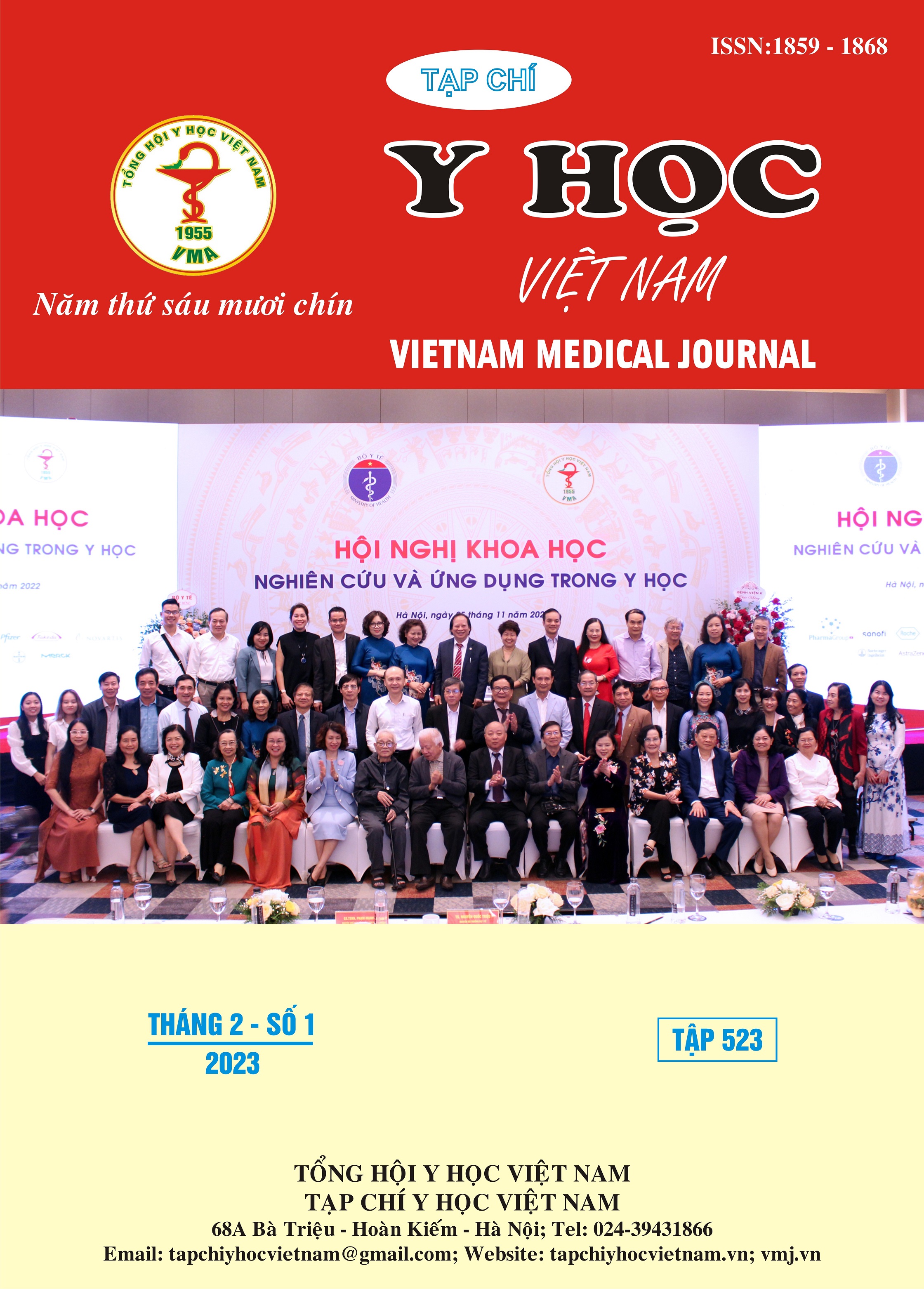MOTION IMPROVING EFFICACY OF THE CATGUT EMBEDDING THERAPY COMBINED WITH CAO THONG TY DECOCTION IN TREATING LOW BACK PAIN DUE TO LUMBAR SPINE SPONDYLOSIS
Main Article Content
Abstract
Objective: This study aimed to evaluate the efficacy on improving lumbar spine’s motor function of the catgut embedding therapy combined with Cao thong ty decoction in treating low back pain due to spine spondylosis. Methods: controlled interventional clinical study, compare the indicators between before and after the treatment. 60 patients were divided into two groups: 30 patients of the study group were administered catgut embedding therapy on acupoints and oral Cao thong ty decoction; 30 patients of the control group were administered electroacupuncture combined with Cao thong ty decoction. The duration of treatment was 20 days. Results: After the treatment, the lumbar spine flexion assessed by Schober test, the fingertips to floor distance, the range of lumbar spine’s movements (flexion, extension,left and right side bending) were improved compare to those at baseline (p < 0.05), the outcome of the study group was comparable to that of the control group (p > 0.05). Conclusion: the catgut embedding therapy combined with Cao thong ty decoction posed the efficacy on improving the lumbar spine’s movements in patients suffering from low back pain due to spine spondylosis. The improvements in the study group were comparable to those in the control group administered electroacupuncture and Cao thong ty decoction.
Article Details
Keywords
Catgut emdedding, electroacupuncture, Cao thong ty, lumbar spine spondylosis.
References
2. Lê Thúy Oanh (2010). Cấy Chỉ. Nhà xuất bản Y học; 39-45.
3. Carlsson C (2002). Acupuncture mechanisms for clinically relevant long-term effects - reconsideration and a hypothesis. Acupunct Med J Br Med Acupunct Soc; 20(2-3):82-99.
4. GBD 2016 DALYs and HALE Collaborators (2017). Global, regional, and national disability-adjusted life-years (DALYs) for 333 diseases and injuries and healthy life expectancy (HALE) for 195 countries and territories, 1990-2016: a systematic analysis for the Global Burden of Disease Study 2016. Lancet Lond Engl; 390(10100):1260-1344.
5. Ho Pham LT, Lai TQ, Mai LD, Doan MC, Pham HN, Nguyen TV (2015). Prevalence and pattern of radiographic intervertebral disc degeneration in Vietnamese: a population-based study. Calcif Tissue Int. 96(6):510-517.
6. Huo J, Zhao J, Yuan Y, Wang J (2017). Research status of the effect mechanism on catgut-point embedding therapy. Zhongguo Zhen Jiu Chin Acupunct Moxibustion.; 37(11):1251-1254.
7. Kushchayev SV, Glushko T, Jarraya M, et al (2018). ABCs of the degenerative spine. Insights Imaging; 9 (2):253-274.
8. White A, Cummings M, Filshie J (2008). An Introduction to Western Medical Acupuncture. Churchill Livingstone Elsevier; Edinburgh, New York: 2008:19–40.


